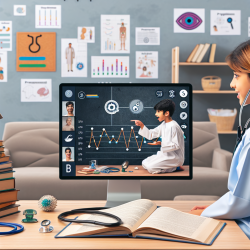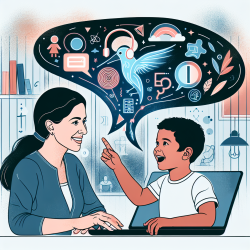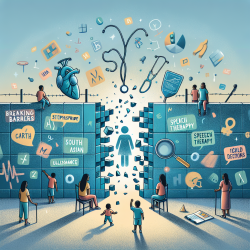Introduction
In recent years, the landscape of healthcare has undergone a significant transformation, with telehealth emerging as a pivotal mode of service delivery. This shift has been particularly impactful in the field of pediatric therapy, where access to care can be a challenge due to geographical and logistical barriers. A recent study titled "Analysis of a model for pediatric physical therapy and clinical education via telehealth" provides valuable insights into how telehealth can be effectively integrated into pediatric therapy and clinical education. This blog aims to explore the findings of this study and offer practical recommendations for practitioners looking to enhance their skills and outcomes through telehealth.
Understanding the Telehealth Model
The study conducted by McKenzie et al. (2024) involved a novel collaborative clinical learning experience (CLE) in pediatric physical therapy delivered via telehealth. This model engaged 12 families, 54 Doctor of Physical Therapy (DPT) students, and 12 clinical instructors (CIs) over a four-week period. The children, who had a variety of diagnoses and functional levels, received individualized therapy sessions in their homes, allowing for a family-centered approach that leveraged the natural environment.
Key Findings
- Qualitative and Quantitative Improvements: All participating children demonstrated qualitative improvements, with 73% showing quantitative progress. This underscores the potential of telehealth to facilitate meaningful therapeutic outcomes.
- Valuable Learning Experience: The CLE was highly regarded by both students and CIs, with 95% of students and 100% of CIs finding it to be a valuable and effective learning experience.
- Family-Centered Approach: The telehealth model necessitated active family involvement, which was perceived to enhance caregiver competence and engagement.
Implementing Telehealth in Pediatric Therapy
For practitioners looking to adopt telehealth in their practice, the study provides several actionable insights:
- Leverage the Natural Environment: Conducting therapy sessions in the child's home can enhance the relevance and effectiveness of interventions.
- Engage Families: Encourage active participation from caregivers and siblings to foster a supportive therapeutic environment.
- Prepare for Technological Challenges: Ensure stable internet connectivity and familiarize yourself with video conferencing tools to minimize disruptions.
- Focus on Communication Skills: Telehealth requires clear and effective communication with both children and caregivers, making this a critical area for skill development.
Encouraging Further Research
While the study provides promising evidence for the efficacy of telehealth in pediatric therapy, it also highlights areas where further research is needed. Specifically, there is a need for more robust evidence on the long-term outcomes of telehealth interventions and the development of standardized assessment tools for remote therapy sessions.
Conclusion
The integration of telehealth into pediatric therapy and clinical education offers a unique opportunity to enhance access to care and improve therapeutic outcomes. By adopting the strategies outlined in this study, practitioners can harness the power of telehealth to create better outcomes for children. For those interested in delving deeper into the research, the original paper provides a comprehensive analysis of the model and its implications.
To read the original research paper, please follow this link: Analysis of a model for pediatric physical therapy and clinical education via telehealth.










